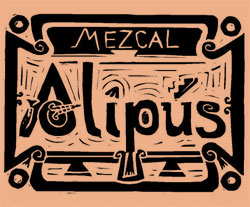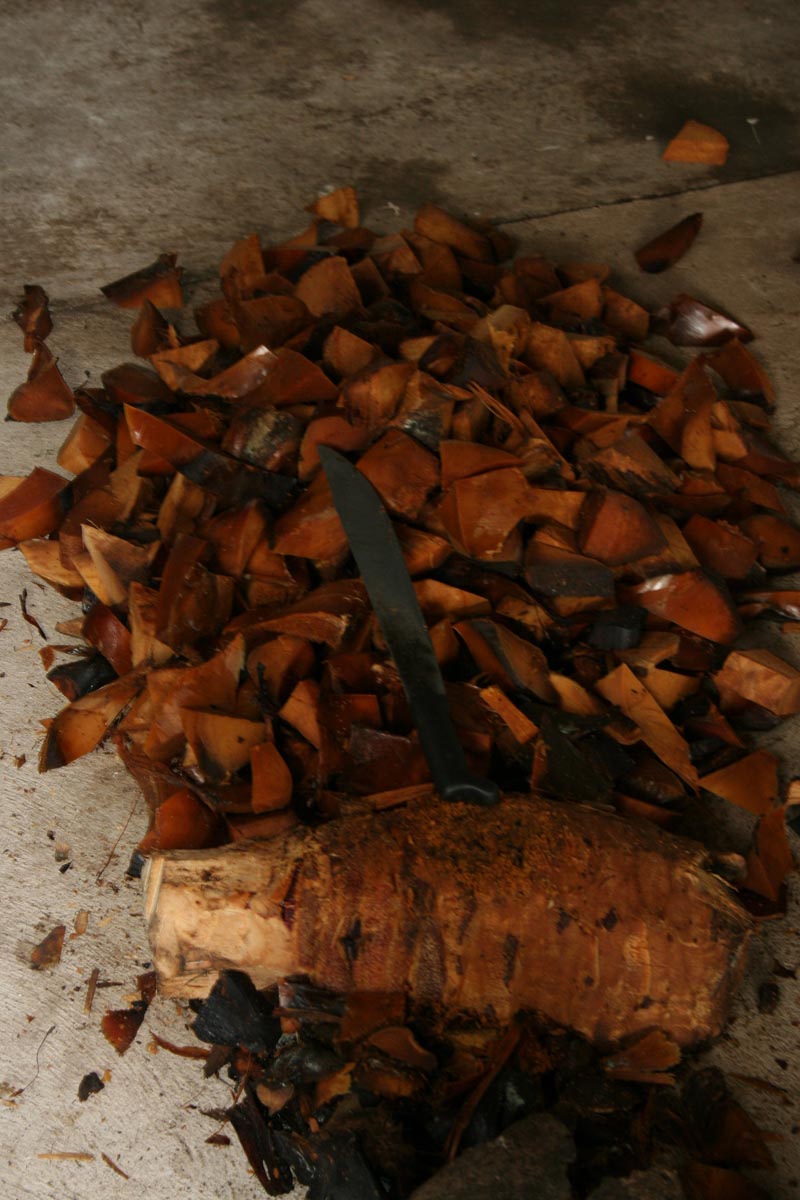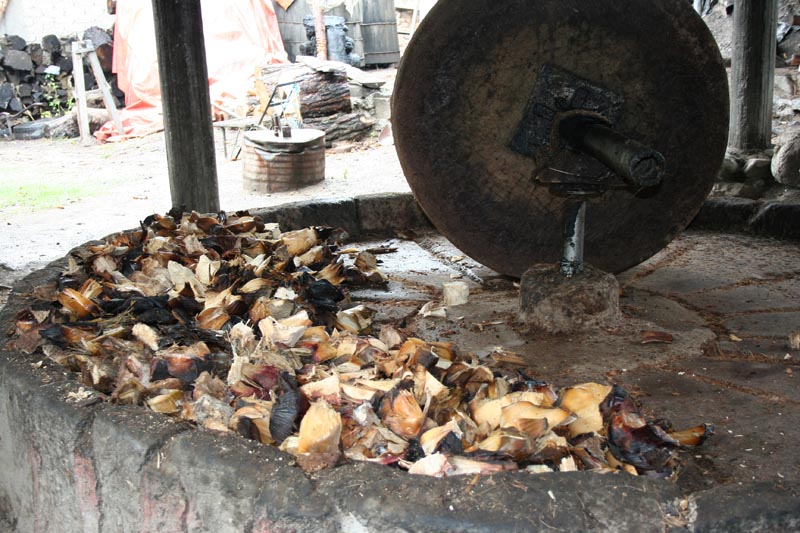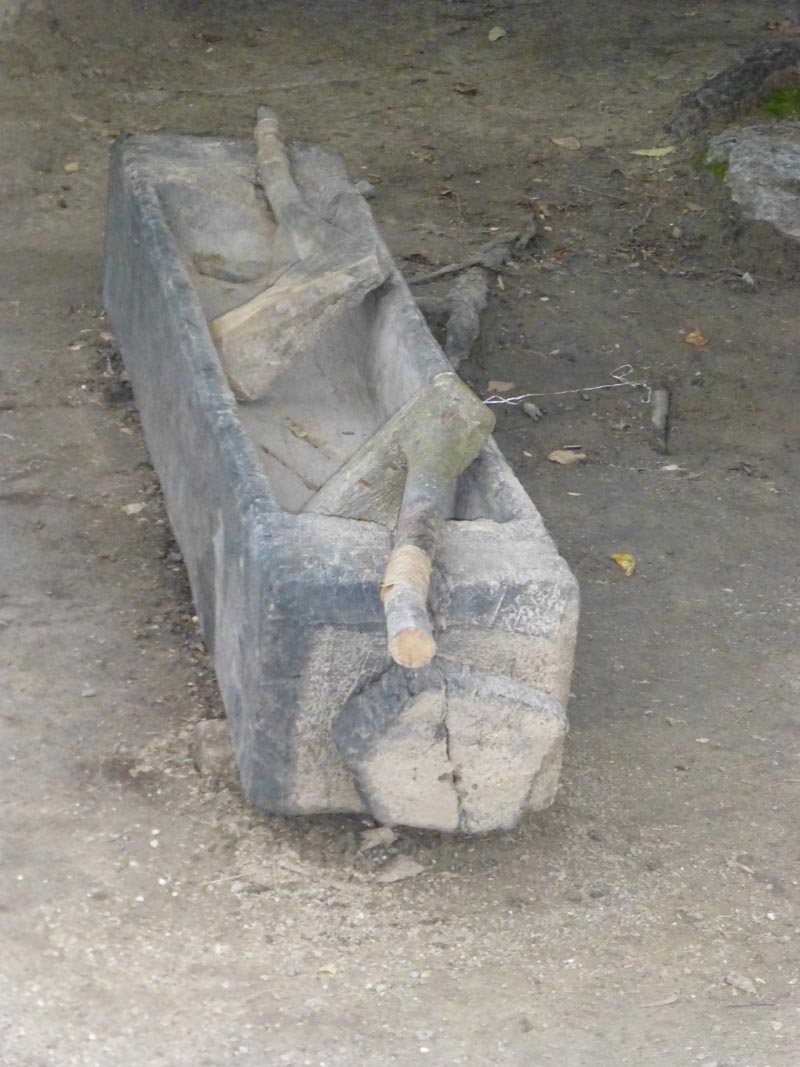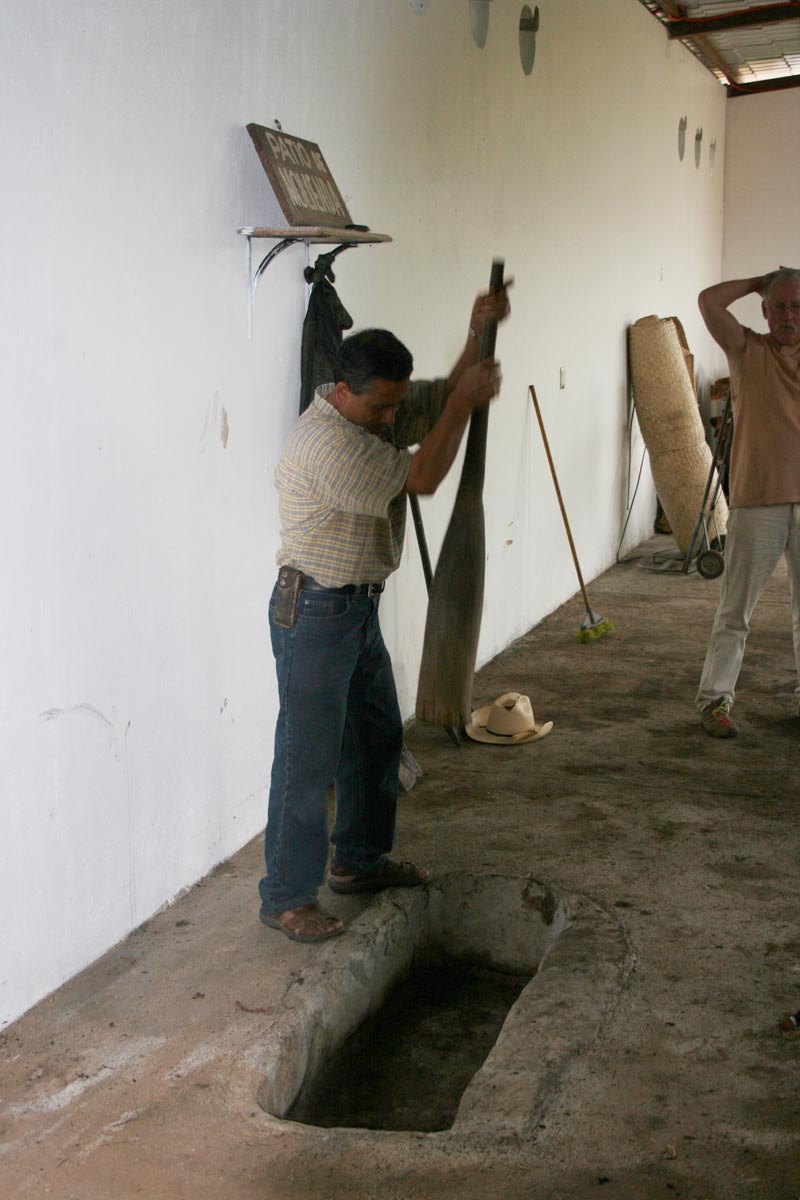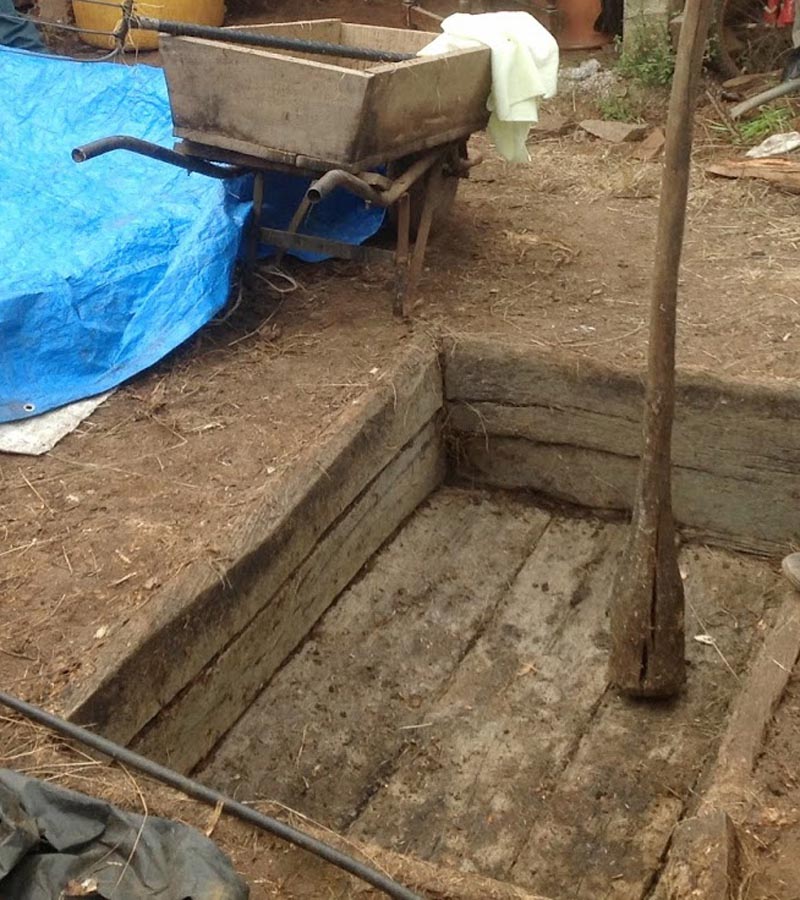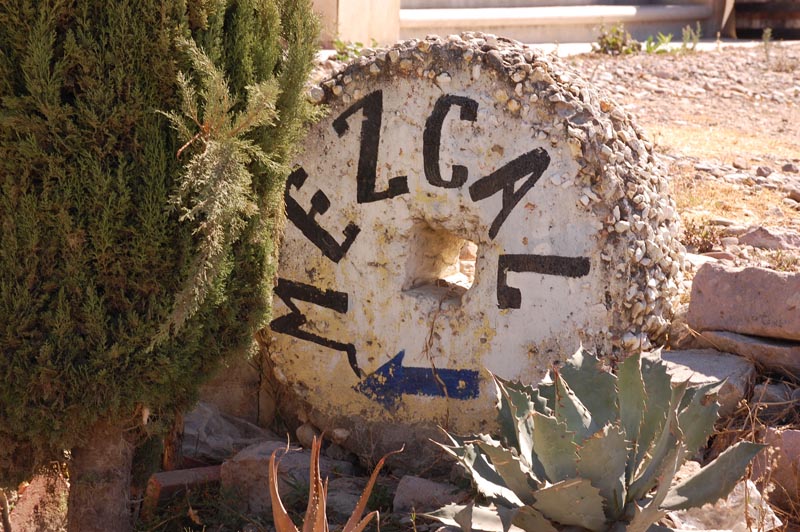Mezcal Process:
Roasting has converted the starches in the raw agaves into simple sugars. People break off pieces and eat them like candy: sweet & tasty.
For efficient milling, the large agave pieces coming from the roasting pit are cut into smaller pieces, using axes and machetes.
Succulent, right? Here’s the moment when you begin to understand why mezcal tastes so good.
Next, the cut-up roasted agaves are crushed in a rotary, horse-drawn stone mill called a tahona or Egyptian mill. This releases the sugary juices.
Here’s a mule pulling the tahona after a quick snack.
Prior to the tahona, distillers crushed by hand in a canoa, a hollowed out log, using wooden mallets. This takes many, many days. The distillers in Potrero still do it this way. So does Alberto Ortiz in Bramaderos.
Mallets used by Alberto Ortiz in Bramaderos. It takes three men fourteen hours to crush enough agave to fill one fermentation tank.
Photographs by Katherine Lewis and a tourist
